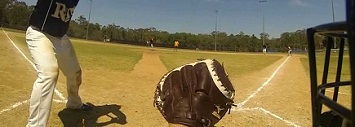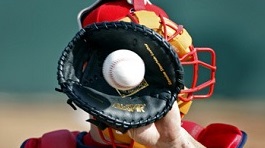
The catcher is in a position of real power in the game of baseball, his or her calls and plays can make the difference between a team looking like stars or coming across as complete novices.
So it is really quite understandable that with this kind of responsibility, there is also a lot of tips and ideas as to what a catcher really should be doing and what his key responsibilities are.
The catcher has probably the most demanding job in baseball. Not as stressful as the pitcher’s mind you, but because he is responsible for so much of the game, including supporting the pitcher, a lot of the mistakes and problems can be blamed on him. Let’s break down a few of the key responsibilities of the catcher and see how a catcher can break or make a team.
View of the Entire field
The catcher’s position is the only position in the team that offers a full view of the entire field. All bases, runners, and fielders are there, and so it is up to the catcher to make sure he is watching and reading movements correctly so he can assign the right play to each situation.

If you thought the hand signals to the pitcher were just designations for the next pitch, you have a lot more to learn, and it’s a good thing you are here.
Supporting the Pitcher
One of the first and most important roles of the catcher is that of support for the pitcher. A team who’s pitcher and catcher meld well, is a team that will make the playoffs. The catcher needs to be able to read the pitchers mannerisms above just the hand signals. If a catcher can tell when a pitcher is getting tired and/or stressed he can change up the pitches, and help take some of the stress off the pitchers shoulders.

Even a minimal break from the stress can take a pitcher from throwing wild, back to laser targeted in a matter of minutes. Break the routine and shake things up a bit, then bring it back to normal when the pitcher starts to loosen up a bit. A simple hand movement can convey to the pitcher that a runner is about to steal, that the next batter has been swinging low or that it’s almost time to switch up the pitch because they he noticed the pitchers arm was getting tired.
The catcher also can convey messages to the pitcher from the base coaches who may be outside the pitchers field of vision, allowing more communication and a greater field of understanding for the pitcher than if he was playing blind to what was happening behind him
And of course…Catching
The biggest responsibility of the catcher though is by far catching.

Catching includes, actually catching the pitches, the recovery of wild pitches, fouls and dealing with runners. Our catchers mitt page features a list of the top choices if you are just getting started and don’t know where to turn. All of these different aspects of play make up the more physical and actionable parts of the catchers job. If they aren’t fast enough to react quickly, then they won’t be playing much further than peewee leagues.
Being able to understand a play the same way as people understand a chess board and the opponents next moves, is what will set apart an okay catcher from a good one. Being able to react quickly and correctly to these moves makes the difference from good to great. Being able to support the pitcher and command the field like an extra manager, developing the trust and respect of your team that makes the difference between a great catcher, and an all-star.
Finally, the constant stress from being on the front line can make even the best catchers start to falter. Recognize your limits, and when you hit the wall, swap out, even if it’s for a few pitches. You need to stay sharp, because a lot of the game is riding on your shoulders.
Comments are closed.